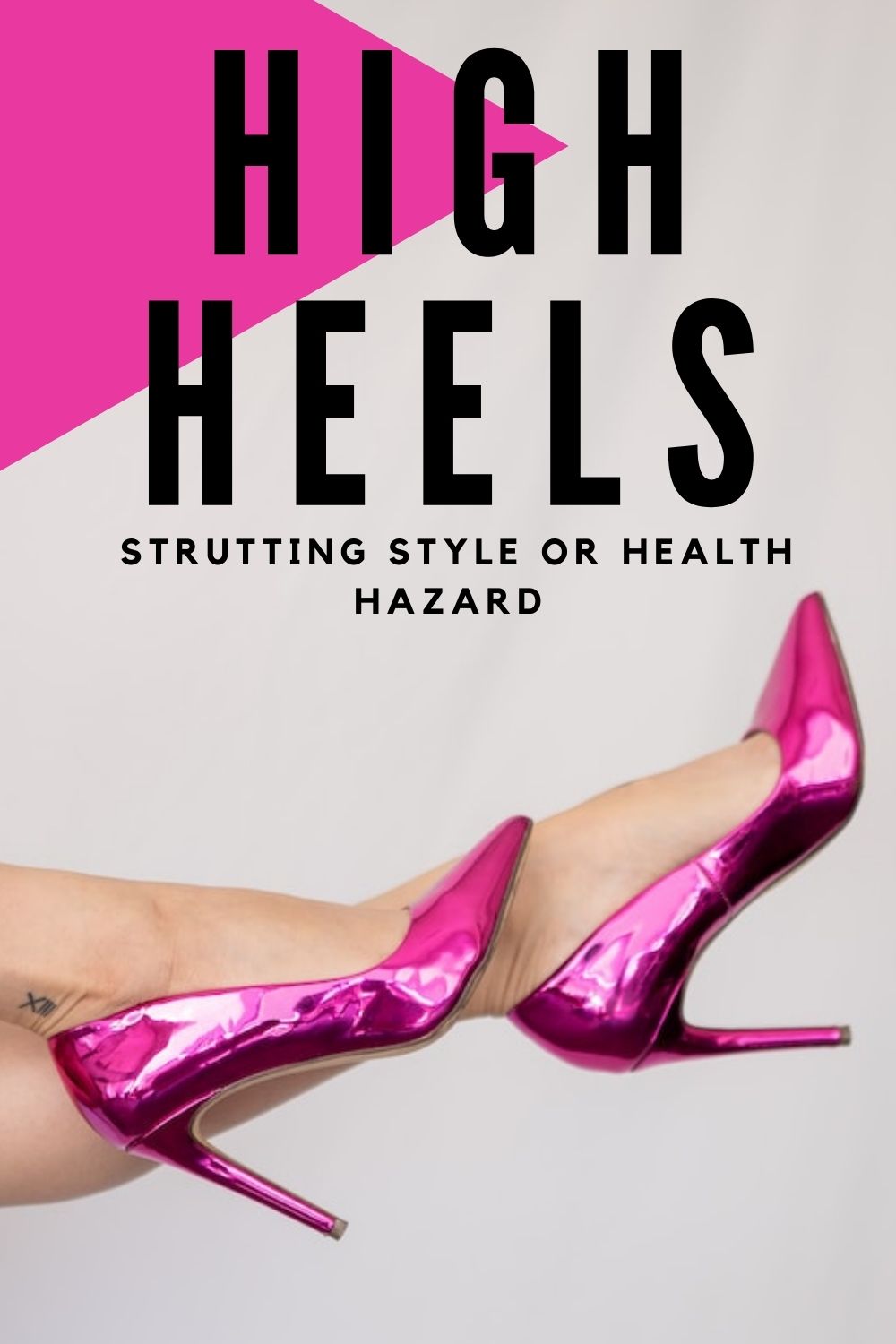High Heels: Strutting Style or Health Hazard?
Table of Contents
Introduction to High Heels
High heels have long been synonymous with elegance, fashion, and sophistication. These footwear staples elevate more than just physical height; they often elevate style statements and confidence levels. However, beyond their fashion allure, there’s a growing concern about their impact on health.
Health Risks Associated with High Heels
Impact on Posture and Spine
The allure of high heels often masks the toll they take on posture and spine alignment. The unnatural positioning of the feet in heels alters the body’s alignment, leading to potential spine issues and long-term posture concerns.
Foot-related Issues: Bunions, Corns, and Calluses
Those graceful heels come with a price tag—bunions, corns, and calluses. Constant pressure on the toes and the ball of the foot can cause these uncomfortable and unsightly foot conditions.
Ankle Instability and Potential Injuries
The elevated height of heels poses a challenge to ankle stability. This instability increases the likelihood of sprains and injuries, affecting not only physical health but also mobility.
Effects on Leg Muscles and Joints
The strain on Calf Muscles and Achilles Tendon
The raised heel position continuously contracts the calf muscles and tightens the Achilles tendon, leading to strain and potential long-term damage.
Impact on Knee Joints and Alignment
The altered posture from wearing high heels can place excess stress on knee joints, potentially causing misalignment and contributing to joint issues.
Tips for Minimizing High-Heel Health Risks
Choosing the Right Heel Height and Style
Opting for lower heels or wedges can significantly reduce the strain on the body while maintaining a fashionable look.
Alternating Heel Heights
Switching between heel heights can alleviate continuous stress on specific muscles and joints, promoting better overall foot health.
Proper Foot Care and Exercise
Incorporating foot exercises and taking care of feet regularly can mitigate some of the adverse effects of wearing high heels.
Fashion vs. Health Balance
The Compromise Between Style and Comfort
Balancing the desire for fashionable footwear with the need for comfort and health is crucial. Exploring alternative shoe options can maintain style without compromising well-being.
Alternatives to High Heels for Healthier Options
Sneakers, flats, or shoes with lower, wider heels offer stylish alternatives that prioritize foot health without sacrificing style.
Impact on Workplace and Daily Life
Professional Settings and Societal Expectations
Navigating workplace attire expectations while prioritizing health can be challenging. Understanding societal norms and making informed choices can help strike a balance.
Strategies for Balancing Fashion and Health in Daily Life
Implementing strategies like carrying spare shoes or using gel inserts can ease the strain of wearing high heels daily.
The Psychological Connection
Confidence Boost from Wearing High Heels
There’s a psychological boost linked with donning high heels; they often exude confidence and empowerment.
The Psychological Impact of Discomfort and Pain
However, discomfort and pain caused by high heels can counteract this confidence, affecting overall mental well-being.
Conclusion
In the battle between fashion and health, finding a middle ground is essential. Understanding the risks associated with high heels enables making informed choices, and maintaining style without compromising health.
FAQs
- Are platform heels safer than stilettos? Platform heels distribute weight more evenly, reducing pressure on the foot, making them a slightly safer option compared to stilettos.
- Can wearing high heels occasionally cause long-term damage? While occasional wear might not result in immediate issues, prolonged use of high heels can lead to chronic foot, ankle, and posture problems.
- Are there exercises to counteract the effects of wearing high heels? Yes, calf stretches, foot massages, and toe exercises can help alleviate some of the strain caused by high heels.
- What heel height is considered safe for daily wear? Heels lower than 2 inches are generally considered safer for daily wear as they put less strain on the feet and body.
- Is it advisable to wear high heels during pregnancy? It’s recommended to avoid wearing high heels during pregnancy as they can exacerbate back pain and affect balance, posing a risk of falls.




